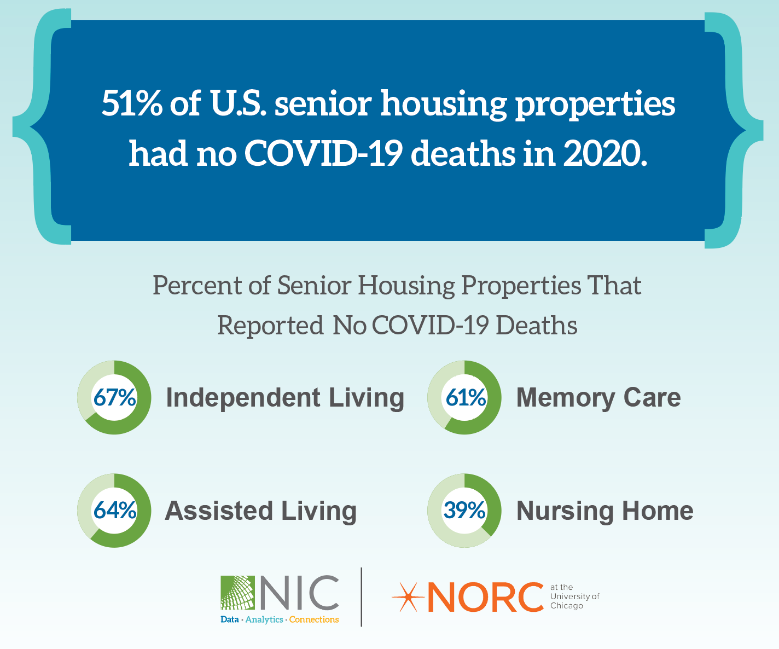CHICAGO — Fifty-one percent of senior housing properties experienced no COVID-19 deaths in 2020, according to an analysis by NORC at the University of Chicago via a grant provided by the National Investment Center for Seniors Housing & Care (NIC). Researchers analyzed data for four facility types in more than 100 counties across five states.
About two-thirds (67 percent) of independent living properties, 64 percent of assisted living properties, and 61 percent of memory care properties studied experienced no COVID-19-related deaths in 2020. Thirty-nine percent (39 percent) of skilled nursing facilities experienced no COVID-19-related deaths during the same period.
“While COVID-19 has been devastating for older adults, a majority of properties avoided any resident deaths,” said Caroline Pearson, senior vice president of health care strategy and lead researcher at NORC, which was formerly known as the National Opinion Research Center. “Death rates in seniors housing increased in settings of care that serve the most vulnerable residents, based on age, health status and caregiving needs. Healthier, more active residents in independent living had comparable mortality to those living in private homes.”
The analysis found COVID-19 deaths across senior housing properties rose in tandem with the acuity, or severity of the illness of the average resident, and the complexity of caregiving needed. The highest mortality by percentage occurred in memory care and skilled nursing facilities.
In contrast, the average mortality rate for adults in independent living properties was statistically the same as the mortality rate of the 75-and-over population in corresponding counties, suggesting residents in this type of group setting were not at higher risk of death from COVID-19 than those living in private homes.
“Ultimately every COVID-19 death in any community designed for older adults is tragic, and lessons were learned regarding health and safety protocols and where improvements are most needed,” says Brian Jurutka, NIC’s president and CEO. “The facts include that COVID-19 transmission is more likely with close person-to-person contact and mortality increases with age and co-morbidities. This study shows seniors housing isn’t homogeneous, and mortality was higher in property types whose residents, on average, are sicker and require higher levels of care.”
The analysis included data from 3,817 senior housing properties across 113 counties in five states: Colorado, Connecticut, Florida, Georgia, and Pennsylvania. To view the full report, click here.

